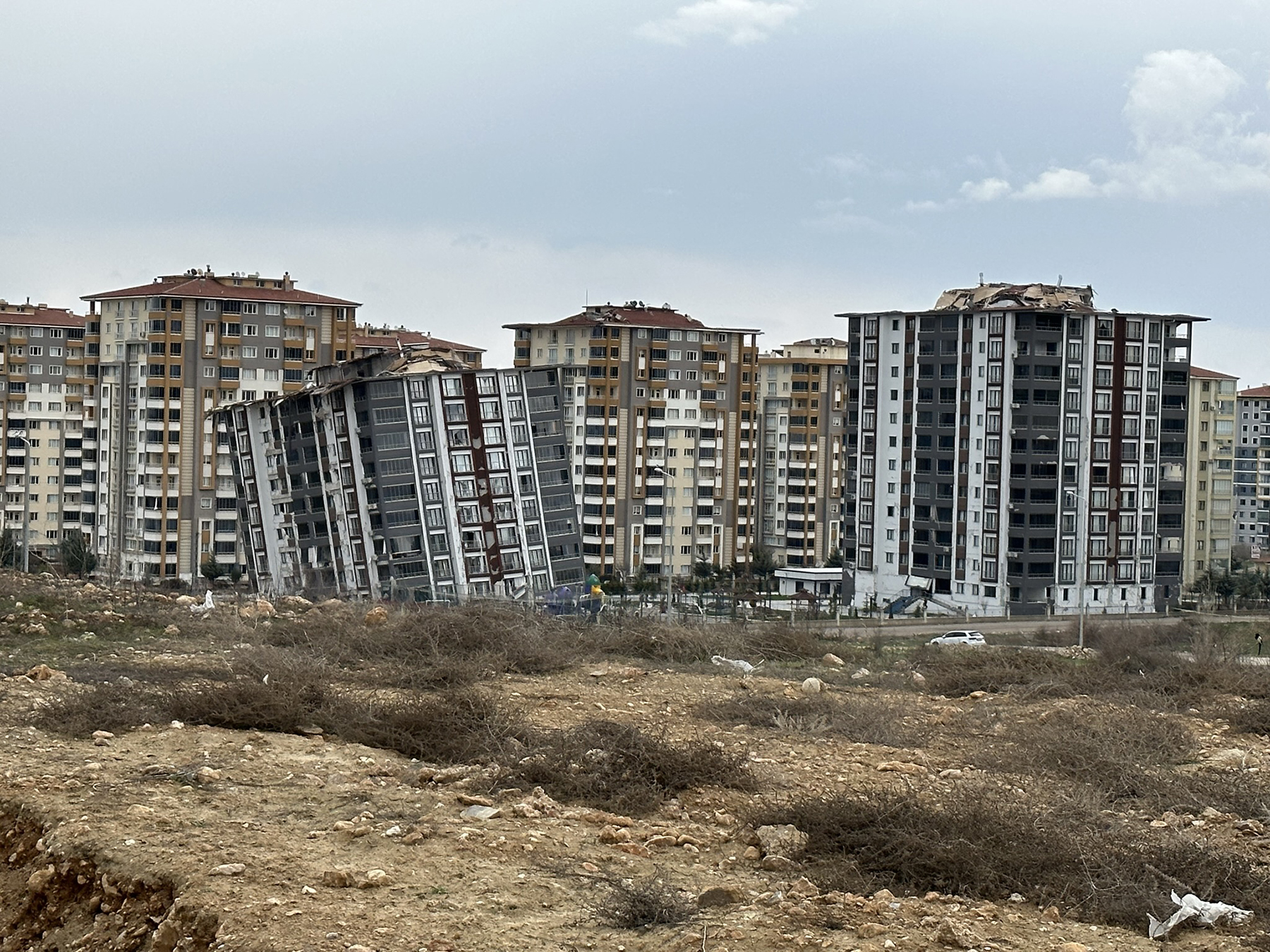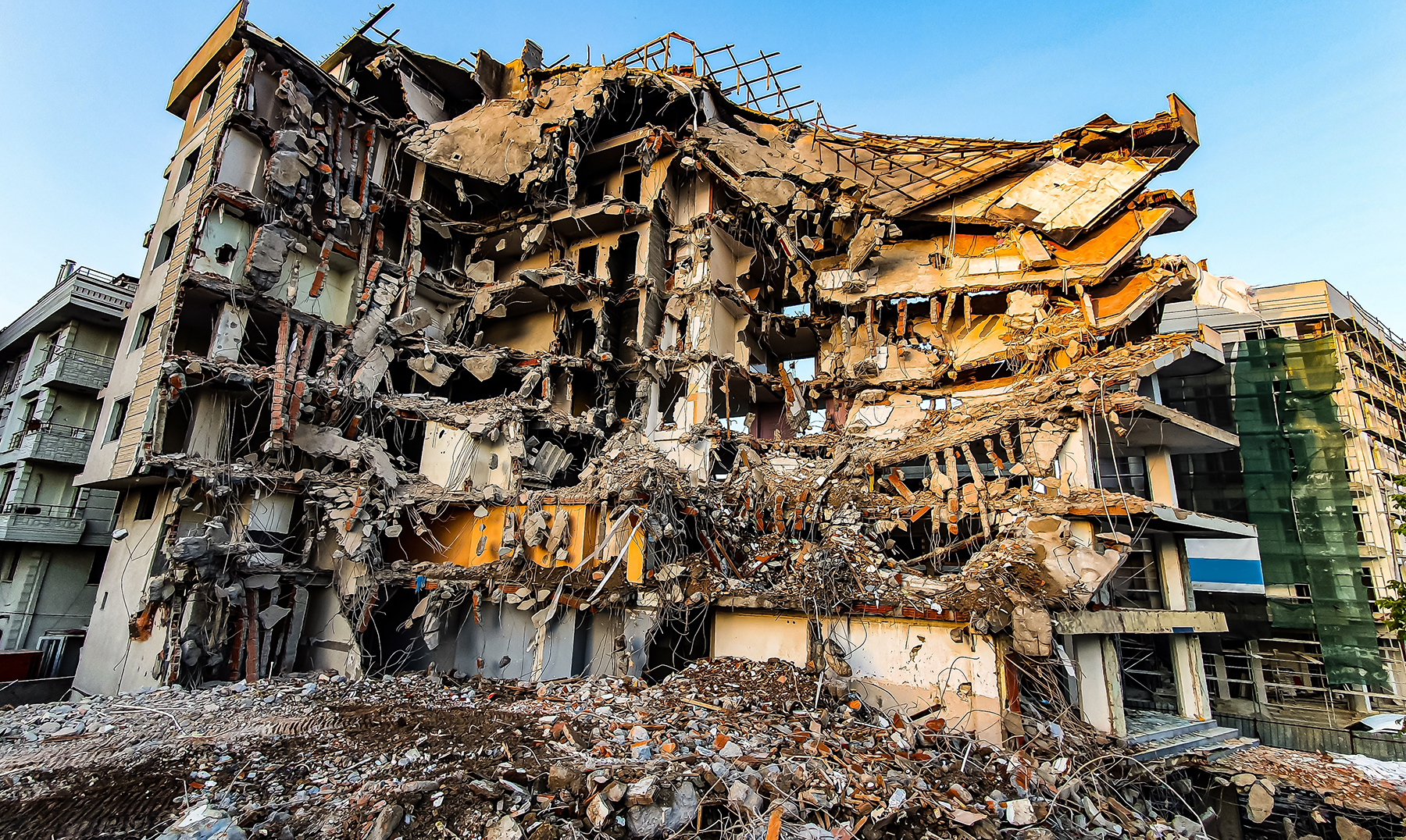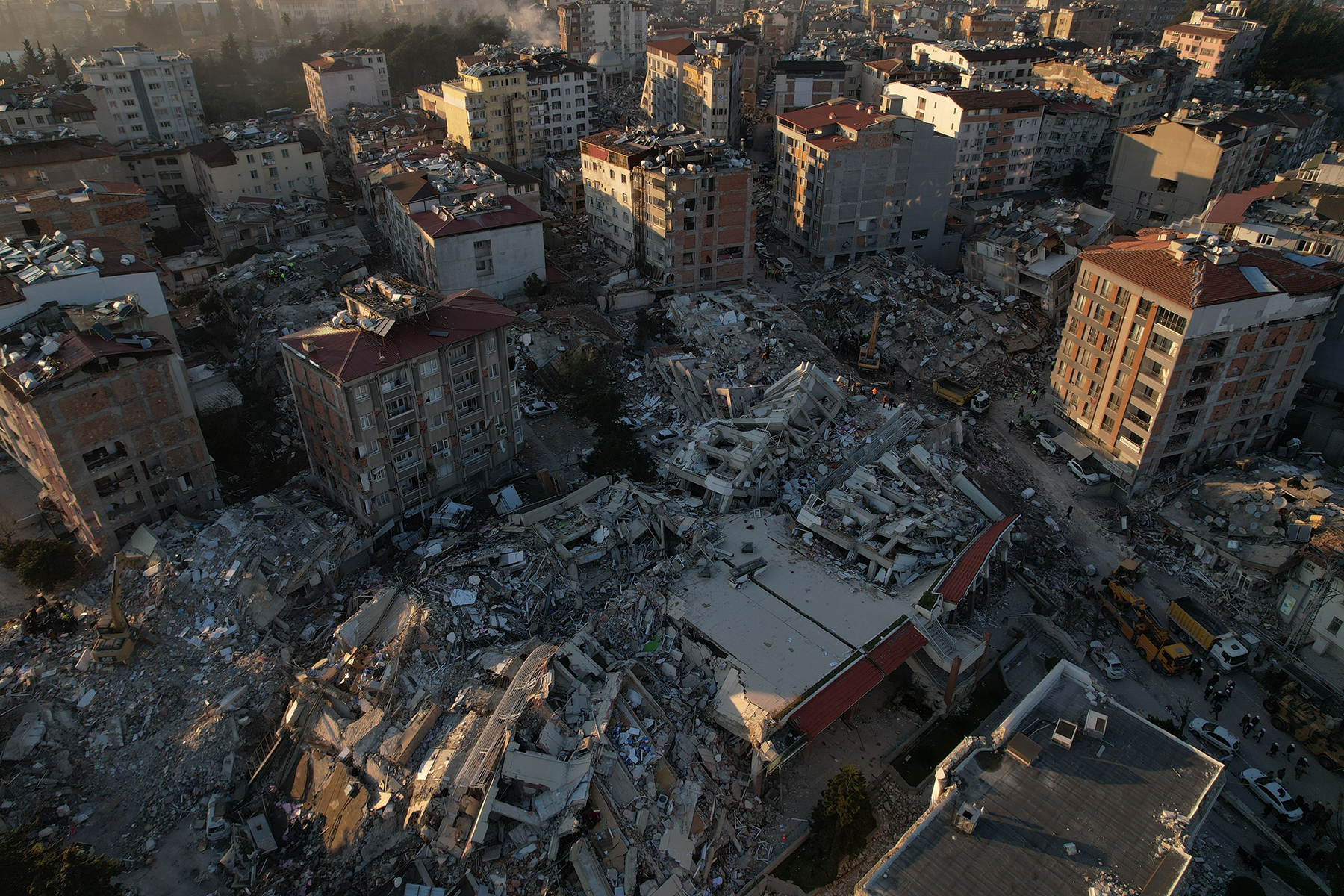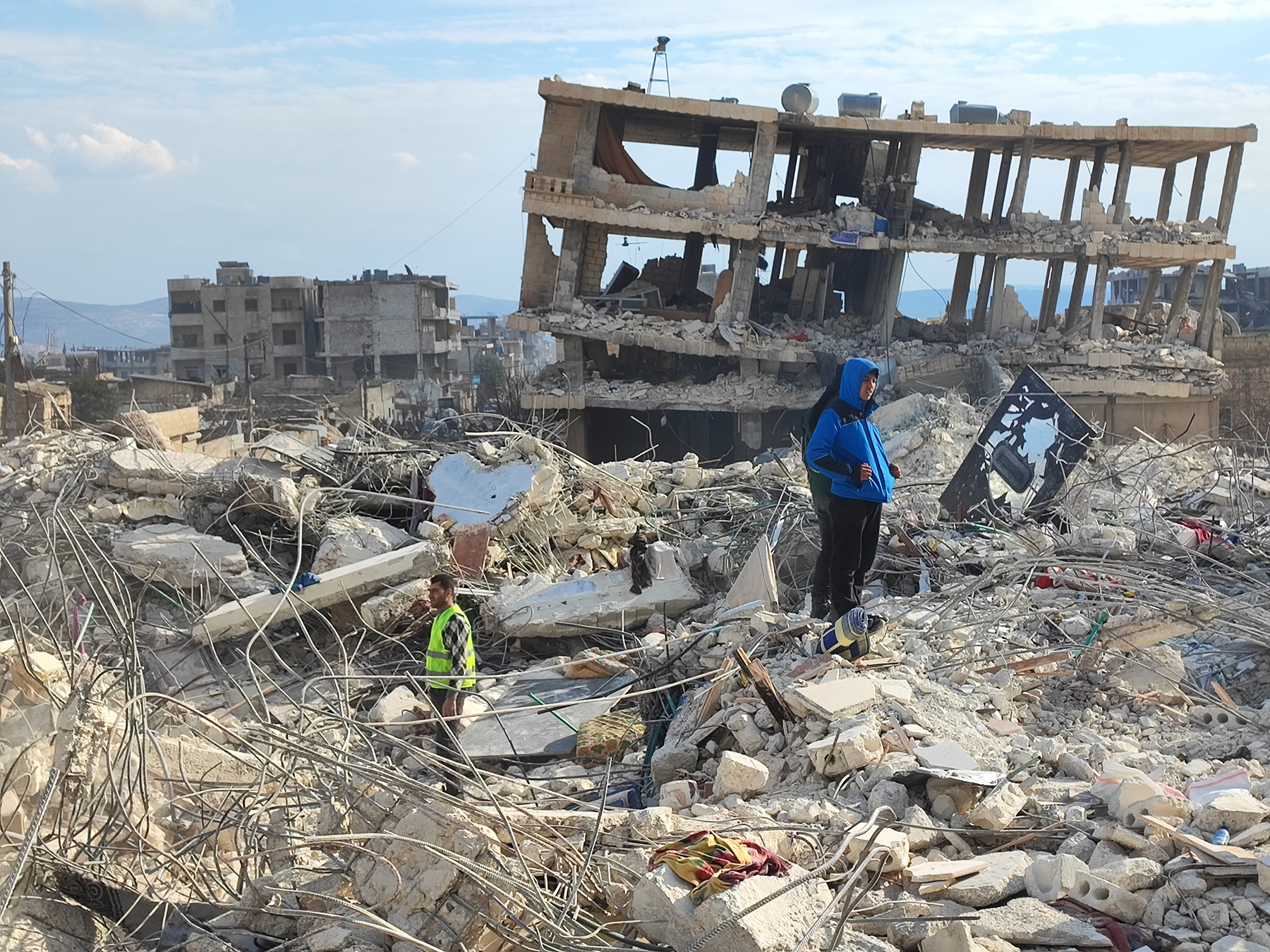By Kayt Sukel
Just before dawn on Feb. 6, as most people were tucked asleep in their beds, southeastern Turkey was shocked awake with a staggering 7.8 magnitude earthquake. The epicenter of this massive seismic event was in Gaziantep Province, near the Syrian border — a place where millions of Syrian refugees have taken shelter while their home country remains embroiled in civil war. A mere nine hours later, a second temblor hit, at 7.5 magnitude, 60 mi to the north. It was the most powerful pair of earthquakes seen globally in nearly 100 years — and has caused widespread damage across Turkey and Syria.

As if two earthquakes weren’t enough, the Anatolian fault system was not finished with the region. Two weeks later, on Feb. 20, as emergency response teams were working to address the turmoil caused by the first quakes, the country was hit with another earthquake in the Hatay Province. This event measured 6.3 magnitude — and resulted in even more ruin to an already-ravaged area.
The combined earthquakes have led to the deaths of more than 50,000 people, with hundreds of thousands more injured or displaced from their homes. With an estimated 160,000 buildings collapsed or severely damaged across the region — and the area being well known as one of high seismic hazard — it is imperative that future construction not only happen quickly but using best practices to make new structures more resilient in the face of seismic forces.
Unequal application of building regulations
Turkey is certainly no stranger to seismic activity. In 1999, the northern part of the country was hit with two strong earthquakes. As a result, the country instituted new building regulations to help make new construction better withstand future earthquakes. Yet, Polat Gülkan, Ph.D., a professor of earthquake structural engineering at Turkey’s Başkent University, says the resulting retrofit program was not as extensive as it should have been.
“Unfortunately, what was missing from those regulations was how to make sure they were implemented,” Gülkan explains. “The country also instituted a new mechanism where the design of new buildings would be checked by a third party before construction — and that third party would also be responsible for supervising the construction.” Those supervision requirements, initially, were only included in a fraction of the provinces in the country, Gülkan says. “It wasn’t until 2011 that the rule was extended countrywide,” he notes.
Jonathan Stewart, Ph.D., P.E., F.ASCE, a professor of civil and environmental engineering at UCLA, as well as a board member of the Earthquake Engineering Research Institute, says engineers who went on initial field visits to affected Turkish cities, including Nurdaği, Kahramanmaraş, Antakya (Antioch), and Adana, reported that while many buildings collapsed, many remained standing. Sometimes one building succumbed to the force of the quake while the one next to it remained upright.
But early assessments suggest that far too often the ones that collapsed were not built to regulations — and, as a result, lacked the structural best practices that could have protected them from major damage, Stewart says.
“Overwhelmingly, the buildings that came down are frame structures with reinforced concrete with a ubiquitous type of infill panel, which is a lot like a masonry brick,” Stewart says. “In many cases, there was a lack of adequate confining steel — and even the integrity of the concrete itself seemed to be questionable in many cases. These buildings would (have) fare(d) much better if they had proper shear walls as opposed to these masonry brick infills.”

Many government officials have blamed building contractors and even structural engineers for subpar work — and, to date, more than 100 arrest warrants have been issued by Turkey’s Ministry of Justice to hold them to account. Yet, Halil Sezen, Ph.D., P.E., F.SEI, F.ASCE, a professor of structural engineering at Ohio State University, who recently traveled to Turkey as part of the EERI’s Buildings Reconnaissance Team, says the issues observed cannot be attributed to issues with building design alone.
“Our team identified issues across the entire construction process, from materials design to inspection and approval procedures,” Sezen says. “The design codes are strong and good. But there must be a mechanism in place to enforce them and make sure they are being followed as they should be.”
Building damage can affect other key lifelines, including schools and hospitals. Gülkan, who recently visited affected areas of Turkey, says many of those buildings were among those damaged.
“You see tents in front of where the hospital building used to be — intensive care units in tents too — and the medical staff trying to attend to the needs of these patients,” Gülkan says. “It is just indescribable. One really needs to see it to appreciate the general misery.”
In terms of other key pieces of infrastructure, Stewart says the country’s roads, for the most part, have held up. But several regional dams sustained significant damage. The Syrian village of al-Taloul was forced to evacuate after a dam on the Orontes River was breached. And a Geotechnical Extreme Events Reconnaissance team reported that several dams in Turkey suffered significant loss of freeboards.
“There appeared to be liquefaction in the dam or the foundation — which led to the dam slumping down. That meant they had to lower reservoir levels to avoid flooding,” Stewart says. “Thankfully, there was not a breach in Turkey, but lowering the reservoir levels is a big issue, especially in an area like this one with ongoing drought issues.”

Between the building collapses, rubble, and other infrastructure damage, Turkey more than has its work cut out for it over the coming year. With millions of people affected by the earthquakes, the government is spearheading efforts to ensure availability of food, education, health care, water, and shelter. It’s unknown, however, how long those efforts will take. More than 2 million displaced Turkish citizens are living in tents — with limited access to food, medicine, and other necessities — and it’s unknown when they might find housing again.
Addressing a looming housing crisis
While several scientific organizations have been able to reconnoiter Turkey, they have not had as much luck crossing the border into Syria.
Gülkan says the photos being released into the public domain suggest Syria is experiencing similar damage to what is seen in Turkey. The World Bank recently estimated the cost of damages to buildings and infrastructure due to the earthquakes are equal to 10% of the country’s gross domestic product. But it is impossible to keep such costs separate from the ongoing costs of civil war, which has also caused devastating damage to the country’s infrastructure. It is likely that many more Syrian citizens will ultimately end up fleeing the country, many of them to Turkey.

This could exacerbate an already-overwhelming housing crisis. The country is focused on removing rubble — which will take considerable time and effort — but the great and looming task ahead is building new housing for the 2 million-plus Turkish citizens living in tents as well as any refugees who may cross the border in the coming months.
“These people need to be housed — and quickly,” says Gülkan. “Already, we see a mass migration of victims, either to neighboring cities or even further away if they had relatives in the area. But there are entire sections of the affected cities that are abandoned, even in areas where there was little damage. Rehousing is and will continue to be a major issue. While the president (of Turkey) has made commitments to rebuild most of the collapsed buildings, it will be a herculean task. Even finding the raw materials like cement or finding enough construction companies to do the job is going to be incredibly difficult.”
And the focus cannot be solely on quick builds. Turkey also needs to ensure that all new structures are sound — and will be resilient in the face of future earthquakes. Gülkan also recommends that the country find ways to enforce the appropriate building codes, so Turkey and surrounding areas do not face damage like this in the future.
“We have a lot of experience in retrofitting and strengthening damaged buildings — we are, at this point, experts because we have been faced with an endless cycle of earthquakes,” says Gülkan. “But the intervals between major earthquakes seems to be much longer than most people’s memory. So, as we rebuild, we need to be very careful and very conscientious — and make sure we are doing it in a way that is safe, so we can re-create the schools, places of business, streets, hospitals, and other things that make our towns and cities function well.”
This article first appeared in Civil Engineering Online.



